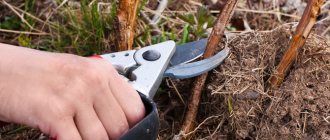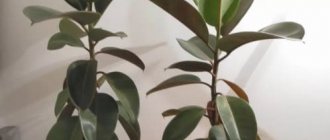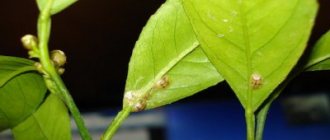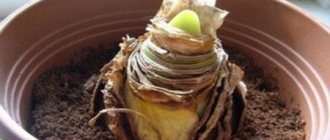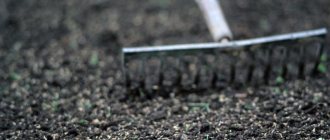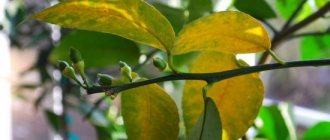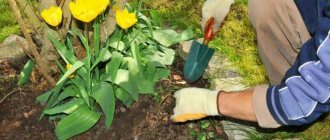Evergreen conifers and cypress crops play one of the key roles in the design of a personal plot. One of the most widely used among them is the many-faced thuja, which is valued for its consistency of color, stable beauty and variety of shapes. Alas, unpretentiousness to growing conditions and low maintenance requirements are not among their advantages. The most common problem with this crop is yellowing of the needles. And it is not so easy to deal with it, because it can have many reasons. And in order to understand what to do if the thuja turns yellow, you need to figure out why this happened.
Natural causes
Very often, gardeners sound the alarm in vain, since yellowing occurs due to the fact that the needles have their own lifespan, and it is much shorter than the life of the plant itself. Each needle lives 3-6 years, after which the chlorophyll grains in it begin to die. It gradually brightens, becomes yellow, then brown and dies, and another grows in its place. Sometimes this process is localized in certain places, but this is normal. A sign that the cause of the yellowing of the needles is natural is that the branch does not die.
Seasonal color change
Many varieties of thuja have the property of changing their color depending on the season and weather. Thus, thuja occidentalis and thuja foldata become golden-bronze with the onset of winter. Varietal varieties Brabant, Columna, Holstrup change their color slightly. And the famous Smaragd variety remains emerald green, despite the season and frost. In addition, the browning of thuja needles during severe frosts is this plant’s natural protection against cold weather. This makes it easier for some varieties to survive the cold winter. Most often, North American species (Canada, Alaska) behave this way, adapted to live in regions where very frosty winters prevail. In this case, with the arrival of spring, they restore their usual green color. If the thuja turns yellow after winter, and not during frosts, the cause should be sought in sunburn, which will be discussed in detail below.
Prevention of yellowing of thuja
To prevent the thuja from turning yellow, the following preventive measures must be observed:
- control over watering and fertilizing;
- protection from sunburn, drafts, excess moisture;
- regular removal of old and dried shoots;
- soil care in the tree trunk circle;
- prevention of diseases and pests;
- proper shelter for the winter.
If the thuja turns yellow, most often this indicates that something is wrong with it.
Prevention of yellowing and wilting of the bush is proper care and prevention of the appearance of negative factors.
Errors in soil selection
Factors that can cause yellowing and shedding of needles may be the following miscalculations made at the planting stage.
Incorrectly selected soil
- Too much sand. In this case, the water, and with it all the nutrients, without delay go into the lower layers, where the roots cannot reach. The plant suffers from dryness and hunger.
- Heavy clay soil with no drainage. Too dense soil deprives the roots of oxygen and contains little humus and nutrients.
- Low-lying peatlands are also not suitable for planting thujas, as they lead to soaking and acidification of the plant's root system.
High groundwater table
Thuja roots are intolerant of excess moisture. As a result, they begin to rot, which leads to the gradual death of the needles and the entire plant. A one-sided process is also possible, which is often confused with sunburn. However, as a rule, it gradually spreads to the entire bush.
Deepening the root collar
When planting thuja, it is unacceptable to lower the root collar below ground level. This leads to the slow death of the plant with gradual yellowing and falling of the needles. A sign of damage is rotting of the bark in the lower part on the butt of the trunk. The bush does not feel much better when the root collar is exposed (inflated), but this has a greater effect on its decorative qualities.
High salt concentration in the soil
Thujas have fairly stringent requirements for soil acidity - within 5-5.5 units. Everything that does not fit into these frameworks must be corrected by adding appropriate components. Excess acidity has a particularly bad effect on the appearance of needles, which is not so difficult to reduce with the help of lime fluff, dolomite flour and ready-made deoxidizers.
Late planting in autumn
Young specimens planted in open ground in late autumn may not have time to take root properly before the onset of frost. As a result, moisture is greatly evaporated from the roots, which leads to dehydration of their tissues and subsequent loss of color brightness. If planting in winter has become a necessity, it is necessary to take enhanced measures to insulate the root zone. With the onset of spring, you need to start early watering with warm (not hot!) water every other day. But even hot water in this case does not have time to burn the roots, since it instantly cools down in the frozen ground.
Lack of moisture
Thuja is a moisture-loving plant, and the browning and then drying of the needles in the spring and summer can be caused by a simple lack of moisture. Moreover, the symptom does not appear immediately, but after some time and only on the condition that the watering is truly insufficient.
Thujas are most sensitive to water deficiency after summer pruning in June. An already weakened tree against the background of heat and drought can get sunburn. A dehydrated plant should not be fertilized to avoid further aggravating the problem.
Mulching the root zone with tree bark, pine litter, and gravel prevents the soil from drying out. And, of course, you need to monitor the condition of the soil around the thuja and water the hedge in a timely manner.
Environmental factors
The reason why thuja needles turn brown is often poor ecology and one-time negative climatic episodes.
Gas contamination
Different types of crops ambiguously tolerate strong gas pollution or smoke in the air, the presence of heavy chemical elements in it, etc. Some thujas easily put up with all this, others may begin to gradually wither away, and first of all this will manifest itself in a change in the color of the branches and the shedding of needles. A sign of environmental trouble for a plant can be the fact that yellowing occurs evenly throughout the entire crown, starting from the tips of the branches. Such a bush may drag out its sad existence on the site for more than one year, but it is unlikely that it will be possible to restore its former decorative appearance.
If you are planning to plant thuja near a busy highway, an industrial enterprise, or simply in a place with poor ecology, you need to be especially thoughtful and attentive to the choice of variety and variety.
Acid rain
Such a natural phenomenon has become not uncommon due to the large-scale use of brown coal by industrial enterprises. Acid rain with a high content of sulfuric anhydride affects the crowns of conifers and other tree species. The phenomenon is most often observed in Western Russian regions. Unfortunately, there are no effective methods to combat this unfavorable weather factor yet.
Protect the thuja from cats and dogs! Their urine greatly increases the concentration of ground salts, which leads to reddening of the needles.
Autumn needles
The needles of pine and fir trees fall more often from the skeletal branches and from the trunk, especially in the very depths of the crown. In many species of thuja, the entire crown turns yellow. It is more intense in the part that is located closer to the central trunk. There's less light there. Both individual needles and entire branches fall off. In many junipers, spruces and pseudo-hemlocks, some of the needles die off by winter. Before this, it becomes gray-gray, so the overall appearance of the tree does not deteriorate. And the change of outfit occurs gradually. Pea cypress often loses entire branches, which turn very red before this occurs.
When growing conifers, sometimes in the fall it seems that the plant is “drying out” from the inside. This is explained by the fact that much more old needles turn yellow and fall off deep in the crown. This condition is clearly visible in pines, cypresses and thujas.
Conifers in an autumn park in France also turn yellow
Errors in agricultural technology
It should be understood that too much attention is sometimes no better than too little attention.
Spring waterlogging
The natural rise of groundwater after snow melts often causes waterlogging of the root system. It’s even worse if this process is accompanied by strong differences between day and night temperatures, as well as a large difference in soil and air temperatures. Shrubs may also suffer from excessive watering in the summer, especially if the summer is cold.
Excessive feeding
A big mistake of inexperienced gardeners is to believe that the better you feed the thujas, the faster they will grow and the more lush and beautiful they will become. The attitude towards applying fertilizers to this crop should be very careful. The annual growth of thuja is small, no one expects flowering and fruiting from it, and an error in the composition and frequency of fertilizing can easily lead to the opposite of the expected result. Due to an excess of certain minerals in the soil, the bush may turn yellow; a common picture of the external manifestation is that the inside of the thuja has turned yellow and is green on top. At the same time, breeds with decorative shades of needles can become simply green, and dwarf varieties take on normal sizes and thereby lose all their special charm.
The loss of color from overfeeding should not be confused with the autumn yellowing of the needles inside the crown, which is a normal seasonal phenomenon.
Drying of the root system
Insufficient watering is the most obvious reason why the thuja turns yellow in the summer, at the height of the hot season. Young specimens with a shallow root system react especially quickly to a lack of moisture. If regular watering is impossible (dacha outside the city), it is necessary to take additional measures to preserve moisture, first of all, think about mulching. At the planting stage, you can put a couple of large flat stones in the planting hole; under them the roots will always find more life-giving moisture. If the roots are already dry, you cannot increase watering at once. This should be done gradually to avoid additional shock to the plant.
Contact of road reagents on hedges
If your fence is close to the road, industrial salt may get on it, which is used to sprinkle the roadway and sidewalks in winter to prevent icing. The reagent contains a high concentration of sodium chloride, increases the level of salt in the soil and has a depressing effect on green spaces.
When salinization occurs, the root system and the lower tier of branches are primarily affected, the tips of which acquire a brownish-brown tint. Similar symptoms appear in thujas and with an overdose of mineral fertilizers.
Affected trees must be carefully pruned and then watered generously to wash the reagent off the shoots and wash it out of the soil as much as possible.
In winter, such a fence is at risk
Sunburn
This cause of yellowing of needles is the most common and widespread. In this case, plants most often receive burns not in the midst of the summer heat, but in early spring, when the sun exhibits the greatest radiation activity and the half-dormant roots are still in the frozen ground. At the same time, there may still be snow on the site, aggravating the situation, mirroring the sun's rays and increasing the intensity of their impact on the crown.
After winter, thujas growing in sun-exposed areas most of all need care and shading. To do this, you need to provide a seasonal cover made of burlap, old tulle, or any fine mesh. It is best to make a “sail” out of them, attaching them to long poles at both ends and digging them into the ground on the south side of the bush. At the end of winter, you can throw spruce branches on the bush from the sunny side.
A specimen that has received a sunburn needs to be watered more intensively (without stagnant water!) and shaded for a long time; usually they can be restored.
Brown shoots
This is a fungal disease that appears in early spring. You can notice it by its yellowed scales. At a late stage of development, the disease affects the entire shoot and it dies.
How to overcome it?
To protect the thuja from this disease, it is constantly fed, and the roots are also sprinkled with limestone. During the period July-October until October itself, it is advisable to spray the thuja with Fundazol (2% solution) every 2 weeks. If you see at least one affected shoot, it should be cut out immediately, and then the disease will not spread further.
Pests
All varieties of thuja can be parasitized by 7 species of insect pests. Among them are those that specialize in pine needles, stem wood, branches and unripe (green) cone fruits. Most of them are oligophages, i.e. parasitic on a small group of plants, which include thuja, juniper and cypress crops. Pests can be divided into groups.
Sucking
These insects suck the juices from the needles, which leads to its yellowing and death. These are two varieties of coccids (juniper and thuja false scale) and one oligophagous variety of aphids. The thuja aphid is monoecious, non-migratory and is found infrequently, but everywhere. It affects 2-3 year old shoots, parasitizing on their underside.
Insect miners
This is the name of pests whose food is the leaf or coniferous tissue itself, in the process of eating which they build internal passages. The thujas are parasitized by the thuja-mining moth, which lays its tiny caterpillars in the thickness of the needles. However, they can be easily seen in the light. The amount of damage to the viability of the plant can be assessed as insignificant, but the decorative appearance of the specimen may suffer greatly.
Stem pests
The second name of this group is xylophagous insects. Despite the fact that the target of their attack is the trunks and branches of the plant, in advanced cases the needles also begin to turn yellow, not receiving enough nutrients.
The selection of funds depends on the type of lesion and season. In particular:
- For coccids (scale insects and false scale insects), Karbofos is used. Preventive treatment is carried out in June, before the buds open. If a lesion has already occurred, it is recommended to use Actellik or Rogor twice a day with a break of 2 weeks.
- Thuja aphids are sensitive to Actellik, Fufanon and the drug Decis Profi. Preventative spraying is recommended to be carried out in May, in case of damage - at any time.
- A severe invasion of leaf-eating and sucking pests requires radical measures. Branches that cannot be restored are cut and burned, and the cut areas are treated with oil paint or drying oil.
- If holes are found in the bark, injections of undiluted Actellik are made directly into the trunk at the rate of 1 ampoule for every 1 square meter. m. This amount is calculated as 1 drop for each injection.
Increased soil acidity
The optimal pH level for thuja is 5.5–6 units. It is at this acidity that the root system absorbs all the necessary substances. On alkaline soils, iron absorption deteriorates - its deficiency is manifested by discoloration of young shoots. In acidic soils, the absorption of magnesium is difficult, but manganese is present in excess. The result is a brown-black color, and then drying of the needles (old shoots are more often affected).
Before replenishing the missing elements, it is necessary to measure the acidity level. You can submit the soil for analysis to an agrochemical laboratory or do it yourself using a household acidity meter (pH meter).
Deoxidize the soil by adding slaked lime or dolomite flour. After the pH normalizes (after 2–3 months), the thujas must be fertilized with mature compost, and in the spring, long-acting NPK fertilizers with a complex of microelements must be added.
It is enough to measure soil acidity once a year
Diseases
Infectious lesions and fungal diseases are the most dangerous causes of yellowing of thuja needles. In this case, we are talking not only about the loss of the decorative appearance of the specimen, but also about its survival.
Late blight
One of the most dangerous fungal diseases that affects the root and destroys it from above. External manifestation is lethargy of shoots, coloring of needles gray. Gradually, the shoots soften, their internal tissues turn brown, and a rotten smell appears. Most often, late blight affects thujas growing on poorly drained soil.
Schutte
This is a whole group of fungal diseases that exclusively affect coniferous species. The causative agents of the pathology are ascomycete fungi, which have similar symptoms of damage. The first signs of infection are usually observed in the second half of summer, when the needles on last year’s shoots begin to subtly change their color without falling off, and with the onset of autumn, small black dots of nascent mycelium can be seen on it. At first barely noticeable, they soon grow and show themselves in all their glory after the snow melts. In spring, the entire bush is covered with mushroom mycelium, resembling a gray-black cobweb.
There are several varieties of shutte, and the methods of dealing with them are identical. This is sanitary treatment at the first signs of damage using Bordeaux mixture or the preparations “Rkor”, HOM”, “Quadris” and their analogues. It is better to cut off the affected branches, collect all fallen needles by hand or with the top layer of soil (do not dig them up!). If the lesion has already become clearly visible, the plant cannot be saved; in order to stop the spread of infection, it must be dug up and burned.
Alternaria blight
A sign is the browning of the needles and the appearance of a black velvety coating on it. Most often it affects dense plantings. The methods of fighting are the same as with the shutte.
Rust
In addition to browning and falling needles, orange growths can be found on the shoots. The disease cannot be cured, but you can manage to remove the affected parts of the plant.
Fungi, which are the causative agent of rust, have a complex life cycle of development using intermediate hosts. On the site they are apple trees, serviceberry, hawthorn and some other trees and shrubs. For preventive purposes, you should not plant thuja next to these fruit crops.
Important! Most pathogens of infectious diseases remain active in plant residues for a long time! Their careful removal is one of the main preventive measures to prevent the spread of the disease.
Thuja false scale
If the bark is covered with yellow ulcers that gradually grow and increase in size, your tree has contracted the false scale insect. Treatment should be started immediately, otherwise this disease will cause spots to cover the entire trunk and it will die.
Thuja false scale
How to treat?
In order to destroy the false scale insect, the following means are used: Rogor, Karbofos, Actellik, Antio.
There are also traditional methods. To prevent this disease, you can wrap the trunk with straw or burlap. At the same time, treat the branches with a soap solution containing denatured alcohol (15 grams of soap, 10 ml of alcohol and 1 liter of warm water). Another way is to apply special caterpillar glue to the surface (this will prevent pests from reaching it).
Once you notice just a few larvae, try simply brushing them off with a brush or knife without damaging the bark.
If the thuja begins to dry out, how can you tell which one can be saved?
From left to right - from healthy thuja to completely hopeless
1 Thuja with dark green needles
A vigorous, actively growing thuja, everything is fine with it.
2 There are already dried twigs on the thuja
If the needles on these branches are already completely dry, and the rest of the crown is dark green, this means that the thuja experienced stress or drought, but as a result only the dried branches suffered. Moreover, this did not happen yesterday, but quite a long time ago. But you shouldn’t relax, control the moisture in the soil
3 There are a lot of dried branches on the thuja, including at the top
This means that the plant has experienced a severe lack of water, and now even a small amount of water stress may be unbearable. Cut out dry branches (they will not regenerate), water the plant actively and deeply. A couple of top dressings of ash will help – potassium increases resistance, including to drought
4 Thuja changes the color of its entire needles
If the entire bush begins to lighten, even if completely imperceptibly, it is hopeless. The needles dry out later than the branches - if they change color, then the branches are already brushwood.
